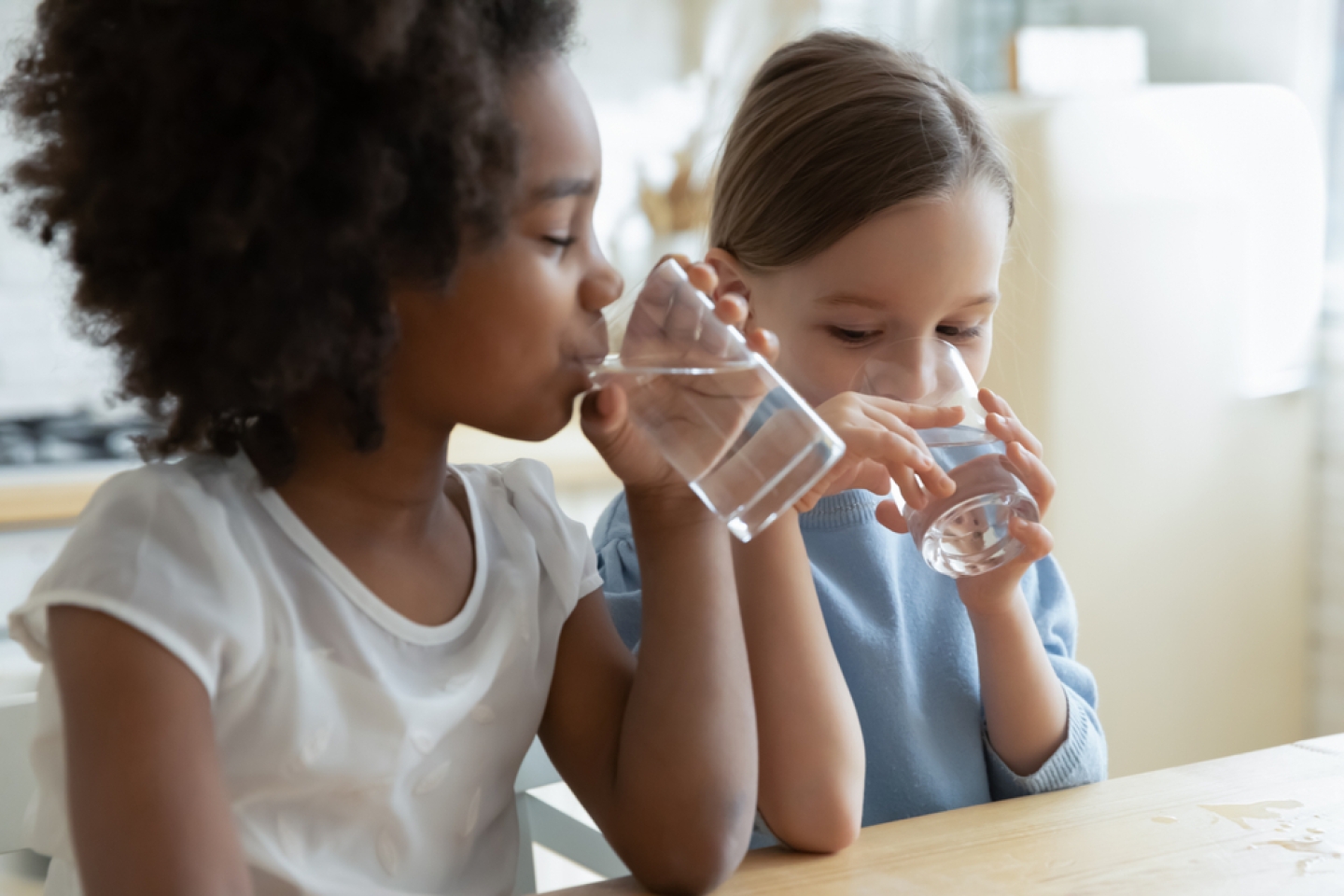
Hydration is an important part of a healthy lifestyle, at every age. Yet, parents and caregivers may often wonder how to instill healthy hydration habits for their children.
Isabel Reckson, CDCES, CDN, RD, MPH recently shared expert nutritional knowledge about helping kids stay hydrated on the Weill Cornell Medicine Kids Health Cast podcast. Here, you can read Reckson’s fact-based approach to hydration to make informed decisions to promote your family’s well-being.
“Our bodies are made up of so much water,” said Reckson. “The human body is made up of 55 to 75 percent water. There’s a lot of different reasons that we need water: we need it to protect our organs and joints; we need it to regulate our body temperature, help with digestion and blood pressure. And it keeps us focused and concentrated. So, water is one of those really important nutrients.”
Given how important hydration is to overall health and well-being, parents and caregivers often wonder how much their child should be drinking every day.
Reckson quickly pointed out that there is no one right answer. “There's so many different factors that can contribute to a child's hydration needs,” she explained. “If your kid is really active that day and they're sweating a lot, they're going to need a lot more than if it's a colder day and they're not moving around as much. So, activity levels, size, how big a child or small child is and their age all really contribute.”
For children, a general rule is to divide the child’s weight by two for an estimate of the number of fluid ounces they need per day.
Pediatricians and dieticians typically recommend drinking mostly water for hydration needs. “The reason we go toward water first is that we do know it generally meets hydration needs, and it doesn't have added sugar, salts or anything else. So, it's kind of an easy best way to be hydrated,” Reckson confirmed.
However, other beverages can contribute to hydration in a healthful way, including milk, milk alternatives, fruit-infused water, seltzers or unsweetened teas. Reckson also recommended naturally flavored water, but encouraged mindfulness about what the waters are flavored with.
“On TikTok, there is a new trend called Water Talk, where there's so much enthusiasm about increasing hydration, which is absolutely wonderful. Most of us are not meeting our hydration needs.,” explained Reckson. “The specific flavorings from the TikTok beverages do have what we call artificial or alternative sweeteners … Those are generally recognized as being safe in moderation. For kids though, there are not a lot of studies about long-term effects and there are concerns about if these products make us hungry or if they have any kind of effect down the road on things like heart health, behavior.”
Dehydration is caused by losing more fluid than one takes in. There are many factors that contribute to dehydration, including hot weather, illnesses or certain medications. Younger children, babies and older adults are at the highest risk of becoming dehydrated quickly.
The easiest way to determine if your child is dehydrated is to check their urine or teach them to do so themself. Pale yellow urine indicates a healthy level of hydration. Dark yellow or orange urine indicates mild dehydration. Brown urine indicates more severe dehydration.
“Signs and symptoms of mild dehydration may include dizziness, lightheadedness, overall less urine along with the darker urine. A smaller child will have fewer diapers — and then you might notice dry lips, tongue, mouth or throat. As it becomes more severe, a child will be lethargic,” explained Reckson. Parents and caregivers can rehydrate the child by giving water that contains electrolytes, such as potassium and sodium.
“In very severe cases,” cautioned Reckson, “you might see cold hands and feet, breathing faster, having a fast heart rate, irritable, confused, drowsy. In very severe cases, reach out to the pediatrician and/or, depending on the concern, the child may need to go to the emergency room and get IV (intravenous) fluids.”
Reckson encouraged all parents and caregivers to call their pediatrician in the event of any questions or concerns about their child’s hydration.
Children of all ages need fluid throughout the day to stay hydrated, not just at one time.
“One of the big challenges I do hear from a lot of my patients is getting enough fluid at school,” said Reckson. “So, sending your child with a water bottle is a great thing to do. You can jazz up the water bottle. If it's a younger kid, they might like stickers or colors on their water bottle. Older kids, myself included, do well with motivational water bottles where they have ticks in terms of goals for how much water to drink at different times.”
To promote drinking more water at home, Reckson recommended that parents and caregivers establish the habit of always drinking a healthy beverage at meals and snack times, as well as eating hydrating foods — including watermelon, cantaloupe, grapefruit, berries, cucumber, lettuce, celery, tomato or homemade popsicles. Parents and caregivers may also consider infusing water with fruit at home or having a competition as to who can drink the most water.
Be sure to listen to the full podcast featuring Isabel Reckson and learn more about the expert care from the Weill Cornell Medicine Department of Pediatrics.